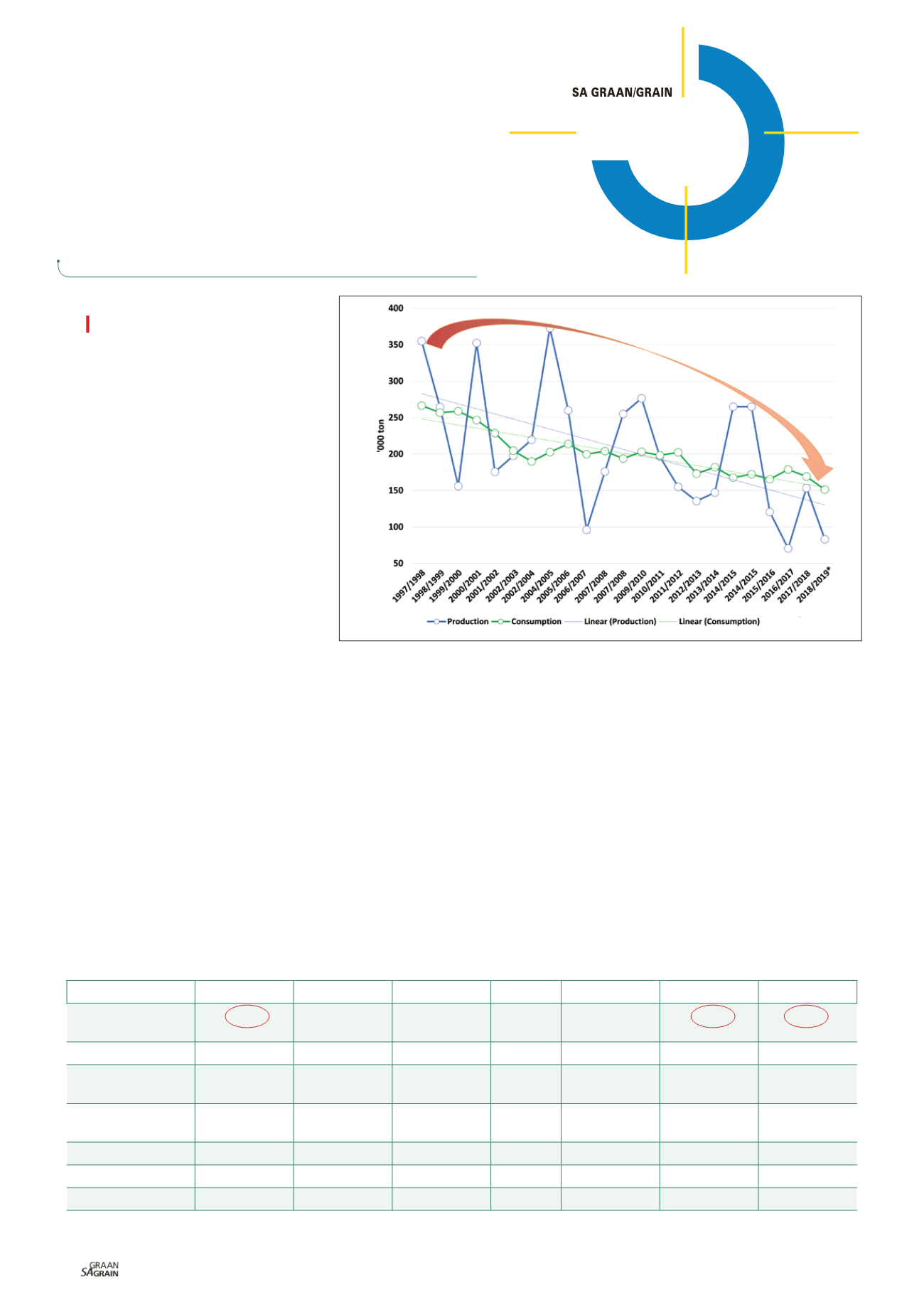

80
Augustus 2018
Removal of VAT crucial
for industry’s survival
T
he sorghum industry was over-
whelmed by Finance Minister
Nhlanhla Nene’s decision to appoint
an independent panel of experts to
review the current list of zero-rated value-
added tax (VAT) items. Sorghum is one of
those items on which VAT is currently lev-
ied. This happened after the 2018 Budget
speech in which an increase in VAT from
14% to 15% was announced: The first in-
crease since 1994.
Sorghum meal competes directly with
maize meal and the VAT on sorghum makes
sorghum products less competitive than
maize products. This limits consumers who
want to diversify with products in the same
food basket – specifically consumers in the
lower income group.
Grain SA, with the support of the sorghum
industry, submitted a proposal and ap-
pealed to Treasury to consider the zero-
rating of sorghum and sorghum meal, as the
industry is faced with numerous challenges
which can lead to its demise.
While writing this article, Grain SA has not
yet received any feedback on the outcome
of the request that sorghum should be
zero-rated.
Problem statement
South Africa prides itself as being the most
food secure country on the African con-
tinent. However, on household level, the
country is still lacking, mainly due to the
affordability levels of some food products.
While sorghum features well in terms of
quality, safety and availability, the afford-
ability remains a key concern.
This is regrettable as sorghum has numer-
ous health benefits and has a big role to
play in a more balanced diet, particularly
among the lower living standards measure
(LSM) groups, who don’t have the buying
power to access additional nutritious sup-
plements. These facts led to Grain SA and
the sorghum industry believing that a relief
in terms of VAT on sorghum related foods
can have a far more positive contribution
in improving South African households’
food security.
The unfair impact of VAT on sorghum and
sorghum meal products compared to other
grain and oilseed commodities puts the
consumption of sorghum at a disadvantage
to substitute products. Consequently, the
VAT on sorghum also contributes to the de-
crease in consumption as it has an impact
on consumer prices.
Consumption and
production
Sorghum is indigenous to Africa and is the
staple food for a big part of the South Afri-
can population. It is mainly used for human
Petru Fourie,
research co-ordinator and production cost analyst, Grain SA
S
O
R
G
H
U
M
Spotlight
Graph 1: Total South African sorghum consumption and production.
Source: SAGIS, 2018
*Outlook
COOKED PER 100 G PROTEIN (G)
CHO* (G)
ENERGY (KJ)
FAT (G)
FIBRE (G)
ZINC (MG)
IRON (MG)
Mabella
(sorghum flour)
3
21,8
471
1
0,7
0,79
1,3
Rice
2,7
27,5
531
0,3
0,4
0,46
0,2
Maize meal super
fortified
1
11
200
0,4
1,1
0,27
0,6
Maize meal super
unfortified
1,1
11
210
0,3
1,1
0,1
0,2
Bread (brown)
9
43
1 029
1,4
5,5
4,49
4,1
Millet
3,5
23,3
499
1
0,4
0,91
0,6
Potato
1,5
15,5
318
0,1
1,5
0,26
0,6
Table 1: The nutritional values of sorghum compared to substitute products (per 100 g).
* Carbohydrate
Source: BFAP, 2018
















